Maharashtra – The ongoing Manoj Jarange Maratha Quota protest at Mumbai’s Azad Maidan has entered its fourth day with escalating demands and intensifying tactics. Activist Manoj Jarange has announced his intention to stop drinking water from Monday, dramatically raising stakes in the reservation dispute that has gripped Maharashtra’s political landscape.
The Manoj Jarange Maratha Quota movement centers on demands for ten percent reservation under the Other Backwards Class category. Jarange’s indefinite hunger strike, which began Friday, represents the latest chapter in ongoing efforts to secure educational and employment quotas for the Maratha community.
Escalating Protest Tactics and Government Response
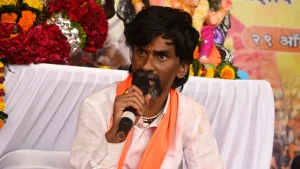
Jarange’s commitment to the Manoj Jarange Maratha Quota cause has intensified with his vow to continue protesting regardless of consequences. The activist declared he would remain at Azad Maidan until demands are fulfilled, stating he would brave “bullets” rather than abandon the movement.
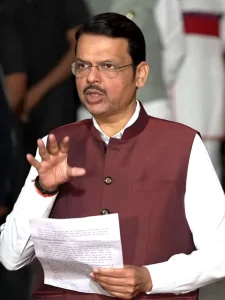

The Maharashtra government, led by Chief Minister Devendra Fadnavis, announced Sunday that it would seek legal opinion on implementing the Hyderabad gazetteer regarding Kunbi status for the Maratha community. This response to the Manoj Jarange Maratha Quota demands represents potential policy consideration despite legal challenges.
State Minister Radhakrishna Vikhe Patil, heading the cabinet subcommittee on Maratha reservation issues, conducted two meetings Sunday addressing quota concerns. These governmental discussions directly relate to resolving the Manoj Jarange Maratha Quota protest through administrative channels.
Legal Challenges and Constitutional Limitations
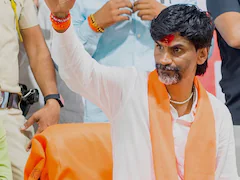

The Manoj Jarange Maratha Quota demands face significant legal obstacles, with past court orders clearly stating that en masse Maratha quotas are constitutionally impossible. These judicial precedents create complex challenges for implementing the protesters’ specific reservation requests.
Constitutional limitations on total reservation percentages, including the Supreme Court’s fifty-two percent ceiling, complicate the Manoj Jarange Maratha Quota objectives. Political leaders have suggested constitutional amendments might be necessary to accommodate such demands.
The government’s commitment to seeking legal opinion reflects attempts to navigate constitutional constraints while addressing the Manoj Jarange Maratha Quota movement’s legitimate concerns through available legal mechanisms.
Also Read: Shah On Rahul Gandhi PM Abuse In Bihar: Powerful Demand for Apology
Mumbai Traffic Disruptions and Urban Impact
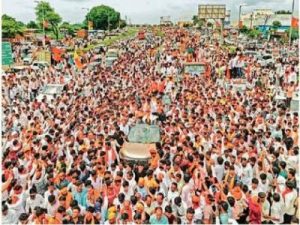

Mumbai police issued comprehensive traffic advisories warning motorists about disruptions caused by the Manoj Jarange Maratha Quota protest. Authorities specifically cautioned about slow traffic and occasional disruptions toward south Mumbai during morning hours.
The traffic advisory emphasized following directions at junctions to minimize congestion resulting from the Manoj Jarange Maratha Quota demonstration. Police coordination aims to balance protest rights with urban mobility requirements during the ongoing agitation.
Protesters occupying Azad Maidan and surrounding areas have created logistical challenges for the financial district. The Manoj Jarange Maratha Quota protest’s location in south Mumbai affects major commercial centers and government offices.
Economic Concerns and Business Community Response
Local traders have expressed serious concerns about the ongoing Manoj Jarange Maratha Quota protest’s impact on commercial activities. The Federation of Retail Traders Welfare Association president Viren Shah described south Mumbai as experiencing “complete chaos” affecting weekend sales.
Business community leaders characterized the Manoj Jarange Maratha Quota agitation as creating a sense that the city feels “hijacked” by the massive gathering. These economic concerns highlight broader implications beyond immediate political demands.
Traders have specifically requested government or High Court intervention to restore normalcy and protect businesses from long-term damage. The Manoj Jarange Maratha Quota protest’s duration and intensity have raised concerns about sustained economic impact.
Political Dynamics and Party Responses
The Manoj Jarange Maratha Quota protest has triggered significant political maneuvering across party lines. NCP (SP) MP Supriya Sule met with Jarange at the protest venue, subsequently demanding special legislative sessions and all-party meetings to address reservation issues.
Protesters blocked Sule’s vehicle after her meeting, raising slogans against Sharad Pawar despite her supportive stance. This incident demonstrates complex political undercurrents surrounding the Manoj Jarange Maratha Quota movement and factional tensions within supporting communities.
BJP leaders criticized NCP (SP) chief Sharad Pawar’s suggestions about constitutional amendments for quota ceiling modifications. These political exchanges reflect broader debates triggered by the Manoj Jarange Maratha Quota demands.
OBC Community Counter-Response
Opposition to diluting existing OBC quotas has emerged from within the Other Backwards Class community itself. NCP minister Chhagan Bhujbal convened meetings of OBC leaders expressing concerns about the Manoj Jarange Maratha Quota demands potentially affecting their existing reservation benefits.
This internal resistance highlights complex dynamics within reservation politics, where the Manoj Jarange Maratha Quota movement must navigate competing community interests and established quota frameworks.
Media Relations and Protest Conduct
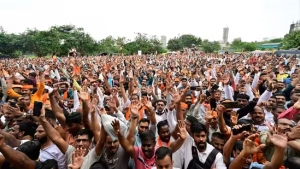
The TV Journalists Association filed complaints against some supporters involved in the Manoj Jarange Maratha Quota protest regarding alleged misbehavior with women reporters. This development raises concerns about protest conduct and media access during ongoing demonstrations.
The journalists’ organization threatened media boycott if such incidents continued, potentially affecting coverage of the Manoj Jarange Maratha Quota movement. This situation underscores importance of maintaining professional standards during political agitations.
Future Implications and Resolution Prospects
The Manoj Jarange Maratha Quota protest’s escalation through water boycott threats indicates determination to maintain pressure on government decision-making. This intensification suggests prolonged confrontation unless satisfactory resolution emerges.
Government promises to seek legal opinions provide potential pathways for addressing Manoj Jarange Maratha demands through constitutional means. However, practical implementation remains challenging given existing legal constraints and competing community interests.
The protest’s continuation into Monday, with government offices reopening after weekends, will test both sides’ resolve and could determine whether compromise solutions emerge from ongoing negotiations surrounding the Manoj Jarange Maratha movement.

